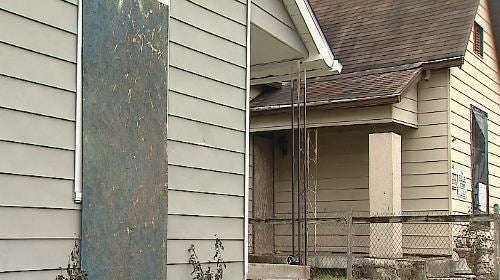Local group accuses Fannie Mae of racial discrimination
INDIANAPOLIS (WISH) – The Fair Housing Center of Central Indiana is one of 20 civil rights groups accusing the Federal National Mortgage Association, or Fannie Mae, of racial discrimination. The groups say Fannie Mae catered to primarily white neighborhoods, while neglecting neighborhoods with mostly minorities.
The National Fair Housing Alliance lead an announcement in D.C. Wednesday, detailing what they call “illegal discrimination” in more than 60 cities, including Indianapolis. The civil rights groups say Fannie Mae ignored its foreclosed homes in African American and Latino neighborhoods, while consistently taking care of its homes in white neighborhoods. According to the complaint, Fannie Mae did not market or maintain the homes in the minority neighborhoods – leaving property to deteriorate. Authorities have said run down homes hurt the neighborhoods and can lead to crime. The Fair Housing Alliance says this has been going on since at least 2009 and they’ve warned Fannie Mae about the problems before, but nothing has changed.
“It is extremely disappointing that despite Fannie Mae being put on notice of this issue as far back as 2009, we continue to see their failure to adequately market and maintain their foreclosures in majority neighborhoods of color,” stated Amy Nelson, FHCCI’s Executive Director. “These middle and working class neighborhoods of color will continue to struggle and lag behind any recovery as long as Fannie Mae, and others like them, fail to properly maintain the homes they own.”
The Fair Housing Center of Central Indiana said it investigated 78 Fannie Mae foreclosed homes between 2012-2013. The group said 33 of those homes were in majority African-American neighborhoods, one was in a majority non-white neighborhood and 44 were in majority white neighborhoods.
FHCC released its findings to 24-Hour News 8:
• 65 percent of the REO (Real Estate Owned, or bank owned foreclosures) in communities of color had obstructed gutters vs. 27 percent in white neighborhoods.
• 59 percent of the REO properties in communities of color had unsecured, broken or boarded windows vs. 32 percent in white neighborhoods.
• 41 percent of the REO properties in communities of color had overgrown or dead shrubbery vs. 27 percent in white neighborhoods.
• 32 percent of the REO properties in communities of color had trash or debris vs. 15 percent in white neighborhoods.
• 32 percent of the REO properties in communities of color had unsecured or broken doors vs. 16 percent in white neighborhoods.
• 29 percent of the REO properties in communities of color at 10 or more deficiencies vs 4.5 percent in white neighborhoods.
“Not only are there substantial losses in property values to the homes located near unmaintained REOs, but an increasing amount of research is also showing a significant health impact to these homeowners including on blood pressure rates, asthma, mental health, and safety,” Nelson continued. “We are demanding that Fannie Mae not only do what they are already required to do in effectively maintaining their REOs, but we are also demanding funds to assist these neighborhoods in stabilizing and addressing the harm experienced.”
In a statement, Fannie Mae told 24-Hour News 8, “We strongly disagree with these allegations and firmly believe they have no merit. We are confident that our standards ensure that properties in all neighborhoods are treated equally, and we perform rigorous quality control to make sure that is the case. We remain dedicated to neighborhood stabilization efforts across the nation, including with respect to our maintenance of foreclosed properties.”
Read the full complaint below:
